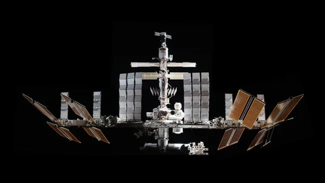The destruction of the ISS could harm the ozone layer.

Experts from the National Aeronautics and Space Administration (NASA) assert that the risk of decommissioning the station for Earth is low; however, other specialists are not convinced of this.
They stated that the burning of a massive piece of metal and other materials in the atmosphere could release harmful chemicals, which may likely damage the protective ozone layer of our planet.
Researchers have already found that when satellites, such as SpaceX's Starlink devices, burn up upon entering the atmosphere, harmful pollutants, particularly aluminum oxides, can be released into its upper layers.
According to an article published in the journal Geophysical Research Letters, this trend is expected to intensify due to the vast number of satellites being launched into low Earth orbit and could contribute to "significant depletion of the ozone layer."
The authors of the article mention that the combustion of a 250-kilogram satellite produces about 30 kilograms of aluminum oxide nanoparticles. It may take up to 30 years for them to reach the stratosphere.
Thus, considering the massive weight of the space station, the environmental impact could be substantial, and researchers are just beginning to understand the scale of the associated risks.